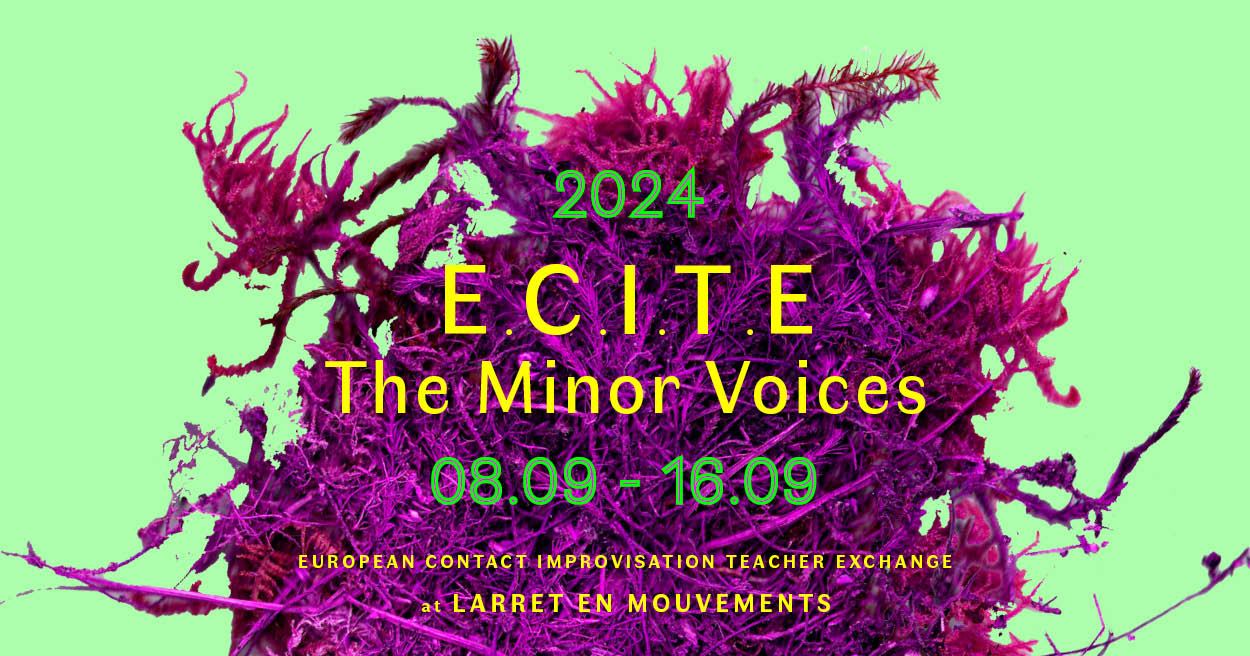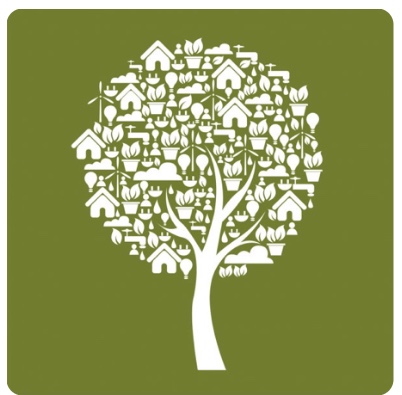
ECITE 2024
the minor voices
to what major?
Who has a minor voice? Who has a major voice? Who does not have a voice?
Do minor voices belong to minor(ized) bodies?
How can we learn to listen for minor voices?
Who is response-able to/for the minor?
As practitioners, teachers and facilitators of Contact Improvisation, we want to meet and research the place of the minor voice in our practice and community. How does CI engage disenfranchised people (racial minorities, differently abled persons, neurodiverse, queer and trans, refugees and migrants…) or does it?
Who and what comes to matter through this practice, and who doesn’t?
We feel a certain contradiction in our experience of/with/through ci. On the one hand the premise of the practice seems to invite the minor (think of the small dance, or the middle voice that leads the improvisation), the ‘come as you are’ invitation seemingly opens the practice to all bodies, minor and major. At the same time we note the overwhelming force of the major. Certain bodies are rarely present in the jams, spectacular (and ableist) aesthetics of flow and acrobatics is predominant in the studio as well as on youtube, Heteronormative habits of socialization permeate the dance floor. Though CI finds its origin in anarchist critique of neo-liberal capitalism, it is today integrated to, and embodies the market economy of demand and supply and the patriarchal star system.
We find that the CI community is overwhelmingly white and is composed primarily from persons who belong or grew up in educated, middle class households (this is, for example, the case of our community in Larret). All this despite the fact that CI has become ‘global’ over the last 25 years.
We have no ambition or intention to change or reform CI. We also recognize that the questions we ask as part of the CI community of practice trouble other communities (dance, art, academia..). We are just curious to create a space of collective research, of study, where these questions will be present. How to make a place for the minor without turning it into a major, and how to shape the major to make space for the minor.
Perline Aglaghanian (FR)
Pedro Penuela (BR/GR)
Natividad Capdevila (ARG/FR)
Lilly Pasquali (IT/FR)
Katy Dymoke (UK)
Eslam Elnebishy (EGY/DEU)
Asaf Bachrach (ISR/FR)
In preparation for September we have started an ongoing, open, online reading/moving group (every second Wednesday 19h-20h ECT, see below). One hour of moving to a reading of a text and then exchanging. Everyone is welcome to the practice (whether you intend to join ECITE or not).
Arrival: 8 September 2024
Departure 16 September 2024
We can welcome about 40 participants. Accommodation will be available in shared rooms/dormitories as well as the camping space (or your own truck).
The price of the event includes studio space, evening classes, lodging and all the food necessary for the preparation of the meals. We will prepare the meals as a group and we will collectively take care of the life and the spaces (cleaning etc..).
Price: 350-450 euros sliding scale
\\ we ask for 50€ non-refoundable deposit \\
23 Impasse du Chalard, Larret – Saint Saud Lacoussière 24470
contact: ecite2024@gmail.com
closest train station: Thiviers
Since June 2020 Larret is a place of collective life, creation and hosting where projects around dance, farming, cooking, building, thinking are developed in their ecological dimension. An eco-somatic place for those who live there and those who come, dancers, researchers, philosophers, craftsmen, the curious…
The studios and collective space are 25 minutes by car from the nearest train station (a shuttle will be in place). The studios, collective dining areas, showers and dry toilets are not wheelchair accessible, and the circulation paths are a mix of dirt and pebbles. There are stairs to access the three-people bedrooms and the 10-people dormitory, but not the studios. From the studios, the river is a 15 minutes walk through the forest, with sometimes steep paths.
ECITE 2024 Reading group
https://cnrs.zoom.us/j/91003484409…
20 minutes listening/moving to a recorded text
5-10 minutes pesonal reflection and writing
30-35 minutes sharing
History of meetings:
all available audio recordings of the sessions are here: https://drive.google.com/drive/folders/1-PL3_hCBL_SY21MeBzz-0SQHrzPNLPkz?usp=sharing
8 May: Sarah Ahmed’s « Feminist Kill Joys and other willfull subjects »
22 May Erin Manning: Excerpt from « For Pragmatics of the Useless«
5 June Ailton Krenak IDEAS TO POSTPONE THE END OF THE WORLD
19 June Katy Dymoke reading from her book Inclusive dance
3 July the minor gesture (based on Erin Manning’s writings)
17 July Erin Manning the minor
The notion of minor comes to us from the work of Deleuze & Guattari *(a Thousand plateaus) and Erin Manning (The Minor Gesture). It is related to Fred Moten and Stefano Harney’s work on the Undercommons.
Erin Manning writes:
« The minor is a continual variation on experience. It has a mobility not given to the major: its rhythms are not controlled by a preexisting struc- ture, but open to flux. In variation is in change, indeterminate. But indeterminacy, because of its wildness, is often seen as unrigorous, flimsy, its lack of solidity mistaken for a lack of consistency. The minor thus gets cast aside, overlooked, or forgotten in the interplay of major chords. This is the
downside of the minor, but also its strength: that it does not have the full force of a preexisting status, of a given structure, of a predetermined met- ric, to keep it alive. It is out of time, untimely, rhythmically inventing its own pulse.. The minor isn’t known in advance. It never reproduces itself in its own image… The minor invents new forms of existence, and with them, in them, we come to be. These temporary forms of life travel across the everyday, making untimely existing political structures, activating new modes of perception, inventing languages that speak in the interstices of major tongues… In its movement, the minor gesture creates sites of dissonance, staging disturbances that open experience to new modes of expression.. The minor gesture is not the figure of the marginal, though the marginal may carry a special affinity for the minor and wish to compose with it….The register of the minor gesture is always political: in its punctual reorienting of the event, the minor gesture invents new modes of life-living. »
